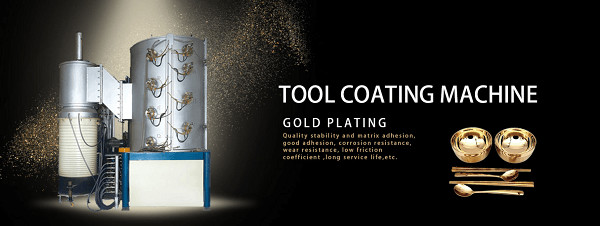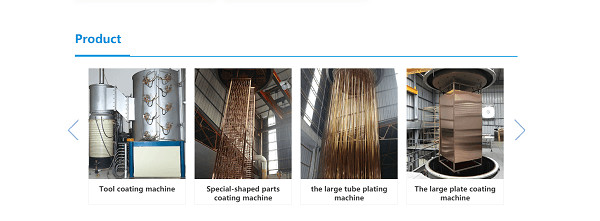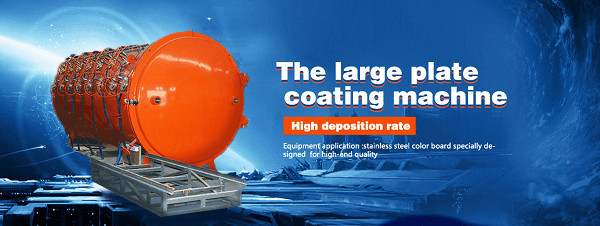Detailed description of the structure of the vacuum coating machine What are the requirements for repairing vacuum coating equipment?
High vacuum coating machines, coating machines are now the most widely used equipment for vacuum conditions. Its related components and components: mechanical pump, booster pump, oil dispersion pump, condensate pump, vacuum measurement system.
Below I will detail the composition and working principle of each part.
vacuum coating machine,pvd coating machine,pvd vacuum machine,vacuum ion coating machine,multi-arc ion coating machine
First, the vacuum body - vacuum chamber
According to the different requirements of the processed products, the size of the vacuum chamber is different. The most used ones are 1.3M, 0.9M, 1.5M, 1.8M, etc. The cavity is made of stainless steel, requesting no rust, solid, etc. Each part of the vacuum chamber has a connecting valve for connecting the pumping pumps.
Second, the auxiliary pumping system
vacuum coating machine,pvd coating machine,pvd vacuum machine,vacuum ion coating machine,multi-arc ion coating machine
The exhaust system is composed of "dispersion pump + mechanical pump + Roots pump + low temperature cold trap + polycold"
The exhausting process is as follows: the mechanical pump first draws the vacuum chamber to a low vacuum condition of less than 2.0*10-2PA, and provides conditions for the subsequent pumping of the dispersing pump. Later, when the dispersing pump draws the vacuum chamber, the mechanical pump cooperates with the oil dispersion. The pumps are connected in series, and the pumping action is completed in this way.
The exhaust system is an important part of the vacuum system of the coating machine. The main components are the mechanical pump, the booster pump (the first introduction to the Roots pump) and the oil dispersion pump.
vacuum coating machine,pvd coating machine,pvd vacuum machine,vacuum ion coating machine,multi-arc ion coating machine
Mechanical pump: also called the fore-stage pump. The mechanical pump is the most widely used low-vacuum pump. It uses oil to adhere to the sealing effect and relies on the mechanical method to continuously change the volume of the suction cavity in the pump to make the pumped container. The volume of the internal gas is continuously expanded to obtain a vacuum.
There are many types of mechanical pumps. There are four types of slide valves (this is mainly used for large equipment), piston reciprocating, fixed-plate and rotary-type (this is now the most widely used, this article is first introduced).
Mechanical pumps are often used to remove boring air, but not to remove oxygen, explosive, and corrosive gases. Mechanical pumps are often used to remove permanent gases, but not good for moisture. Function, so it can't remove water vapor. The primary function of the rotary vane pump is the stator, rotor, shrapnel, etc. The rotor is inside the stator but different from the stator. Like two inscribed circles, two pieces of shrapnel are mounted in the rotor slot, and the springs of the two shrapnel are spring-loaded. , to ensure that the shrapnel is tightly attached to the inner wall of the stator.
What are the requirements for repairing vacuum coating equipment?
What are the requirements for repairing vacuum coating equipment? Vacuum coating equipment has the following requirements for welds during maintenance, so we should pay attention to it when designing and welding.
One: When designing the weld structure, the joint must be welded through, and the harmful space for collecting dirt should be avoided.
vacuum coating machine,pvd coating machine,pvd vacuum machine,vacuum ion coating machine,multi-arc ion coating machine
The correct welding is to place the weld on the vacuum side and carry out deep fusion welding. Most of the wrong welding will form a dead space, that is, some space is blocked between the two welds, and gas is stored therein.
Second: the weld should be welded once to avoid dead space when two welds are not detected.
Three: When the weld is required to be welded on both sides, the internal weld should be airtight. For the purpose of leak detection, a drill plug should be provided for external welding.
Four: If the structure is to be welded in the container, the internal weld should not be continuous, so that the gas from any groove can be easily released, and the structural weld should not cross the seal weld.
Five: Welded components should be designed so that the maximum number of welds can be tested separately during the manufacturing phase and can be corrected before final assembly.
Six: The maximum allowable leakage rate (for air) of the welded seal is about 10-7 Pa·m3 (s·m) in the length of the weld.





